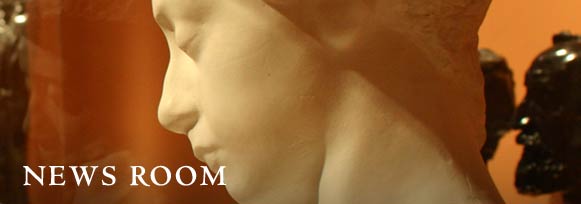Works of Four Chinese Masters Premiere in America
Tracing the Past, Drawing the Future: Master Ink Painters in 20th-Century China
February 17 – July 4, 2010
Stanford, California —— Cantor Arts Center at Stanford University announces an exhibition that brings to the United States a rare and important group of 20th-century paintings by four Chinese modern masters. The exhibition “Tracing the Past, Drawing the Future: Master Ink Painters in 20th-Century China” presents more than 110 works, in two rotations, February 17 through July 4, 2010. Admission is free.
“This landmark exhibition illuminates a turning point in the development of Chinese ink painting during the 20th-century,” explained Dr. Xiaoneng Yang, the Cantor Arts Center’s Patrick J. J. Maveety Curator of Asian Art. “Drawing upon paintings and calligraphy on loan from Chinese collections new to American audiences, the exhibition presents monumental portraits, vibrant bird-and-flower painting, and spectacular landscapes by Wu Changshuo (1844–1927), Qi Baishi (1864–1957), Huang Binhong (1865–1955), and Pan Tianshou (1897–1971). Collectively known in China as the ‘Four Great Masters of Ink Painting,’ these artists faced the dual challenges of negotiating the impact of encounters with the West, while inventing new directions for long-held practices of ink painting.”
A fully illustrated catalogue with scholarly essays in English accompanies the exhibition, including two introductory essays and essays on each artist. Full entries, translated from Chinese, accompany images of the works in the exhibition.
An international symposium, "The Politics of Culture and the Arts in Early 20th-Century China" will be held February 19–21. Cosponsored by Stanford’s Cantor Arts Center, Center for East Asian Studies, and Department of Art and Art History, the symposium is open free to scholars and the public.
In collaboration with the Stanford Pan-Asian Music Festival, the Center presents a series of "elegant gatherings," an ancient term for a gathering of scholars and artists who come together to share of their knowledge, deepening friendships as they cultivate their respective scholarly and artistic pursuits. Created by Professor Jindong Cai, each Thursday evening gathering, February 18, April 8, and May 27, uses live performances to explore music and its relationship to ink painting, calligraphy, poetry, faith, and healing in Chinese tradition. The performances are sponsored by the Joan and John Jay Corley Fund for Performance.
Docents offer free public tours of the exhibition Thursdays at 12:15, Saturdays and Sundays at 2 p.m., and for groups by appointment. Call 650-723-3469 at least six weeks ahead to schedule a private group tour.
The exhibition is made possible by the E. Rhodes and Leona B. Carpenter Foundation, the Clumeck Fund, Cantor Arts Center Members, and the Khoan and Michael Sullivan Fund. Additionally, the exhibition is supported by an indemnity from the Federal Council on the Arts and the Humanities. Other support is provided by the Halperin Discretionary Fund, the Constance Corcoran Miller Fund, the Kenneth Brenner Family Fund, the Joan and John Jay Corley Fund, and the Stanford Institute for Creativity and the Arts.
VISITOR INFORMATION: Admission to the museum and to the exhibition is free. Cantor Arts Center is open Wednesday – Sunday, 11 a.m. – 5 pm, Thursday until 8 p.m. The Center is located on the Stanford campus, off Palm Drive at Museum Way. Parking is free after 4 pm and all day on weekends. Information: 650-723-4177, museum.stanford.edu.
# # #
PUBLICITY IMAGES
Selected high-resolution images for publicity use only may be downloaded from Cantor Arts Center's FTP site. Contact PR Assistant Manager Margaret Whitehorn to access the images: 650-724-3600, mmwhite@stanford.edu
Fact sheet for exhibition
Watch video interview of Stanford Art History professor Richard Vinograd, collaborator on the exhibition.



